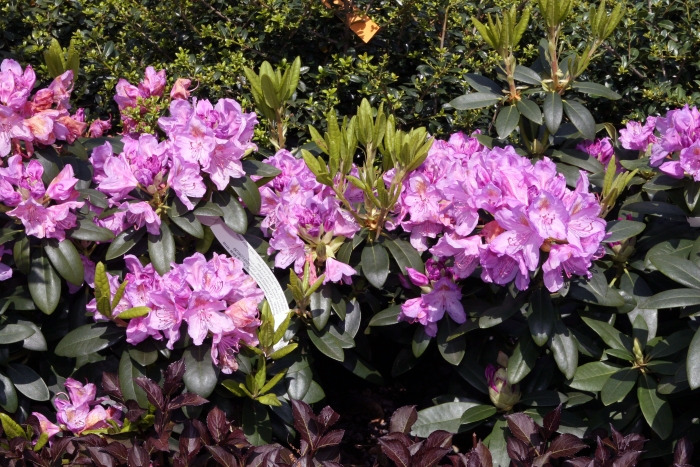Catawba Rosebay
(Rhododendron catawbiense)
Catawba Rosebay (Rhododendron catawbiense)
/
/

Photo by David J. Stang
CC BY-SA 4.0








































































Estimated Native Range
Summary
Catawba Rosebay thrives in acidic, well-drained soils and prefers part shade, though it can tolerate full sun in cooler climates. It requires consistent moisture but does not do well in waterlogged conditions. Mulching helps retain soil moisture and protect the shallow root system. While it is generally low-maintenance, it can be susceptible to pests such as vine weevil and diseases like root rot if conditions are not ideal. It is important to avoid planting it in areas with poor drainage or heavy clay soils. The cultivars ’Purple Elegans’, ’Roseus Elegans’, and ’Grandiflorum’ are popular for their larger or more colorful flowers.CC BY-SA 4.0
Plant Description
- Plant Type: Shrub
- Height: 6-10 feet
- Width: 8-12 feet
- Growth Rate: Moderate
- Flower Color: Pink, Purple, White
- Flowering Season: Spring
- Leaf Retention: Evergreen
Growth Requirements
- Sun: Part Shade
- Water: Medium
- Drainage: Medium
Common Uses
Bank Stabilization, Bee Garden, Bird Garden, Border Plant, Butterfly Garden, Hedges, Hummingbird Garden, Rabbit Resistant, Showy Flowers, Street Planting
Natural Habitat
Forested mountain regions of the Eastern United States, particularly the Appalachian Mountains
Other Names
Common Names: Catawba Rhododendron , Mountain Rosebay , Purple Laurel , Purple Ivy , Mountain Rose Bay , Red Laurel , Rosebay Laurel , Catawba-Rododendron , Parkrododendron
Scientific Names: Rhododendron catawbiense , Rhododendron catawbiense f. tomopetalum , Azalea catawbiensis , Hymenanthes catawbiensis , Rhododendron ×clivianum , Rhododendron ×russelianum , Rhododendron catawbiense f. catawbiense
GBIF Accepted Name: Rhododendron catawbiense Michx.